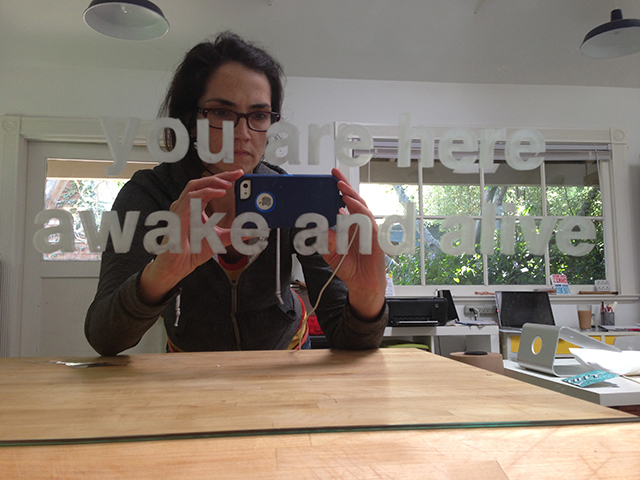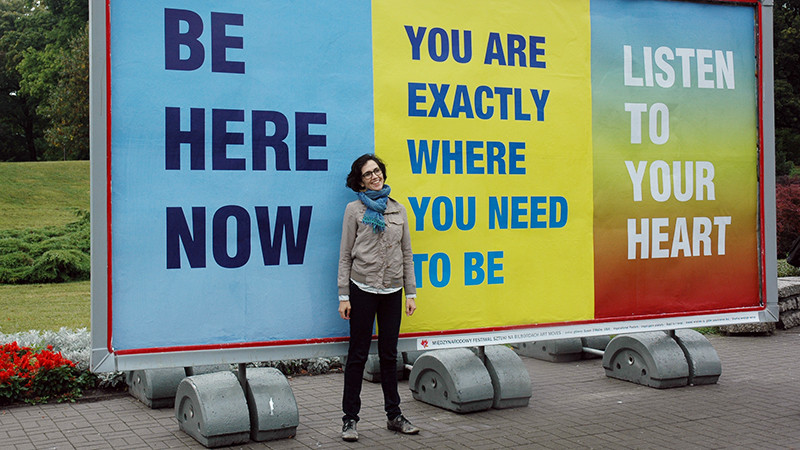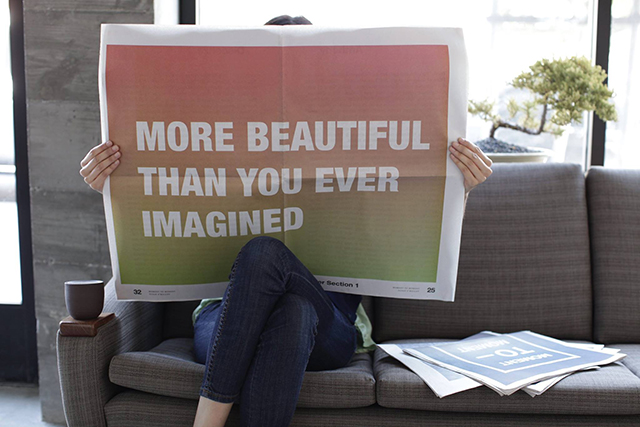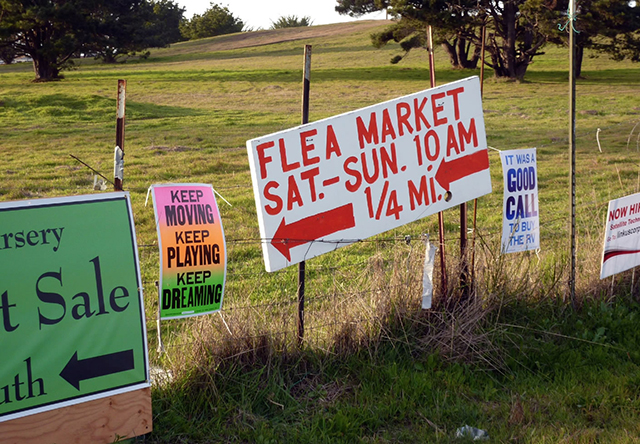Many people far and wide are reeling from news of the sudden passing of beloved Bay Area artist and curator Susan O’Malley, who collapsed last Wednesday and never regained consciousness while in her last week of pregnancy with twins, who survived only briefly. It is a catastrophic loss that cannot be softened. Now we must do the painful work of focusing on the life she lived and the optimism in her work, even as we grapple with incomprehensible tragedy. It is the only way forward to honor her life and celebrate her legacy.
O’Malley’s artwork is deeply engaged in social practice, participatory exchanges, public art and positive messaging. Often drawn from conversations, the work is generally text-based and takes the form of prints, posters and buttons, large-scale vinyl signage and billboards, as well as interventions, among other media. As a curator she worked with hundreds of artists to organize exhibitions for numerous organizations — she is widely recognized as a champion of diversity across culture, gender and age. Her rare generosity of spirit provided a tremendous example for those around her, myself included.

I first became friends with O’Malley in 2002 when we worked together at a gallery called HANG Art on University Ave. in Palo Alto. She had a great big infectious laugh, a sly humor and a complete indifference to the machinations of the so-called professional art world. If I didn’t know what to make of something, O’Malley always offered a clear sense of truth and fairness. She was a grounding presence and a true friend to many in a business where superficiality often reigns, delighting in projects that abandoned insular white cube galleries to meet people where they were in life. It tickled her to no end when her work was included in a mass-distributed book of inspirational illustrations; when her image from the book was later featured in a national circular ad for Target, she called it “a dream come true.”
We worked together on many projects over the years — crisscrossing back and forth in different situations. In 2005, I presented her Pep Talk Squad, a performance-based project produced in collaboration with her best friend writer Christina Amini, under the auspices of S. O. R. T. (the Susan O’Malley Research Team); it offered scheduled pep talks to the public at Pro Arts, an Oakland nonprofit where I was then director of exhibitions and programs. She also participated in several projects with Invisible Venue, my alternative curatorial project.
All of O’Malley’s work, both as artist and curator, reflected a rare generosity and empathy for those around her — to the extent that her boundless enthusiasm sometimes baffled cynics unable to grasp the actual work of optimism. But she knew it was work and she took it very seriously. Under her professional interests on LinkedIn, O’Malley listed: “Making the world a better place. Staying positive in a world that does the opposite.” Hers was a kind of radical positivity not often recognized because it defies every stereotype of radicalism. In a world bogged down daily by trauma in the media, she was a covert revolutionary with her bright colors, inspirational messages, encouragement, enthusiasm, and genuine personality.




